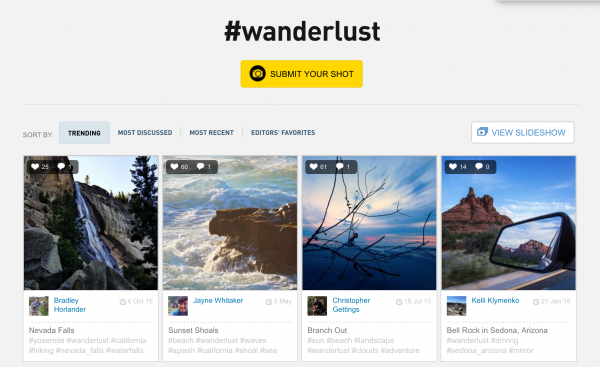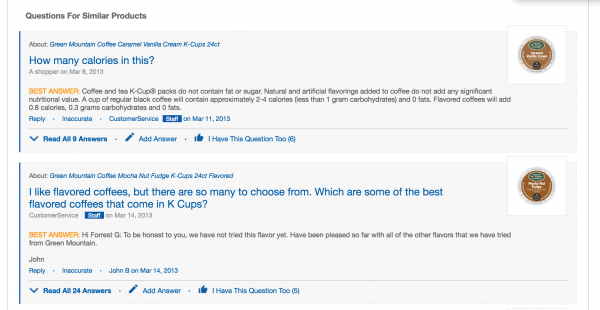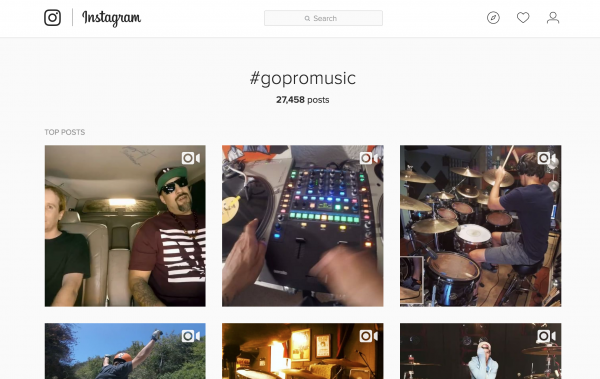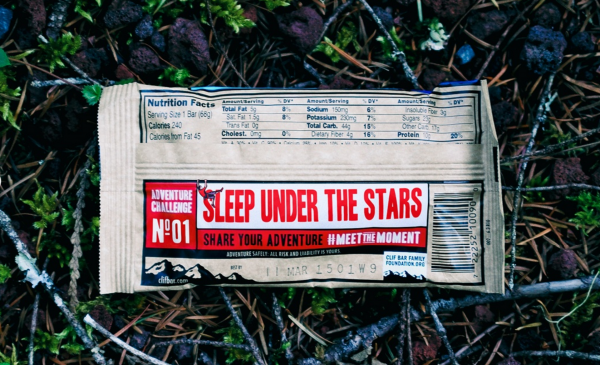We’ve spoken before about how important content marketing is to getting your brand out there. After all, just think about the brands you follow. What happens if they don’t post for a week or more? They drop down in your attention, as something more exciting comes by.
But, c’mon, who has the time or the resources to create so much content? That’s where user generated content campaigns can be a huge boon to small and medium-size e-commerce companies.
What is user generated content?
User generated content (UGC) is just what it sounds like – content that comes from your users and customers, rather than originating from your brand. This can run the gamut from Instagram posts to reviews or forums on your own website.
User generated content can increase your traffic and brand awareness, while establishing a dialogue between yourself and your customers. One of the best things about user generated content is that it promotes engagement. Your customers wouldn’t be posting content if they didn’t want to, and that provides huge social proof to boost your brand.
In fact, studies of shown that potential customers trust UGC more than almost any other form of content.
Ready to get started? Here are five great user-generated content campaigns to get your creative juices flowing.
1. Recognize your customers’ passion: National Geographic
National Geographic is well known for their photography. For years, they’ve inspired their readers with amateur photography contests where they print the winners in the magazine.
In this digital, visual world where everyone’s smart phone doubles as high-quality camera, it was only natural for National Geographic to take their photography contests onto social media. Their Your Shot community offers users a chance to share images, take part in assignments and even get feedback from National Geographic photographers and editors. The best photos may even be published on National Geographic’s website or print publication.
The community is a perfect fit for National Geographic’s readership, who are already drawn to National Geographic’s beautiful images. It’s a positive way for National Geographic to build on the interests of their community, and create dialogue with them.

Your Takeaway: Find out what it is that your customers are passionate about, and create a place where they can come together to share that passion – whether it’s a Twitter hashtag, a Facebook page, or your own social media platform.
2. Collaborate your customers: Starbucks
Back in 2014, Starbucks turned its reputation for creative cup designs on its head by serving up lattes in a plain white cup. Customers were encouraged to doodle on the cup, take a photo of it, then submit their photo through social media using the hashtag #WhiteCupContest.
Starbucks receives nearly 4000 customer entries over the course of three weeks. The winning design was then released as a limited-edition reusable cup that followed. The campaign was not only a great way for Starbucks to engage its customers on social media, it also tapped into a core value of the company – creativity – by recognizing the creativity of their customers.

Your Takeaway: Invite your customers to collaborate with you, giving them more of a stake in your brand. This could be through a product naming contest, a design contest, or soliciting feedback based around a hashtag.
3. Give your customers a voice: Coffee for Less
Every e-commerce company knows the value of SEO when trying to rank well in search engines. User-generated content can be a powerful way to increase the SEO on your website. E-commerce company Coffee for Less used UGC in the form of reviews and comments to increase their organic search traffic by 10% and their conversions by 125% according to a case study at Marketing Sherpa.
By adding this interactivity to their website, the company received about 6000 comments over the course of three years. Not only did this provide social proof for customers interested in buying their products, it also meant that each page constantly had refreshed content.

Your Takeaway: Adding reviews and comments to your website not only helps engage your customers and makes them feel heard, it can also boost your SEO mojo.
4. Enhance the experience of live events: GoPro
Are your customers gathering together in real life? That’s what the marketing team at camera manufacturer GoPro realized could be a gold mine of UGC for them. Using the hashtag #GoProMusic, the company highlighted fan photos that were submitted to Instagram using their GoPro cameras at the Bonnaroo Music Festival.
This real-time submission of user-generated content not only increase the experience for fans who are actually at the music Festival, it provided a real-time demonstration of how users could use their GoPro cameras to share their own experiences.

Your Takeaway: Build community with your customers by rallying around a live event – whether that’s Paris fashion week if you’re a fashion retailer, the Tour de France if you’re a bicycle company, or a big conference in your industry. Create a unique hashtag for users to share their experiences within your community.
5. Send your customers on an adventure: Clif Bar
Organic food and drink manufacturer Clif Bar & Company has long been associated with the outdoors and adventure. That’s why their #MeetTheMoment campaign is such a perfect fit. On the back of every one of their nutrition bars, you’ll find one of 20 different challenges, like “sleep under the stars,” and “paddle out”. Customers are encouraged to share their adventures using the hashtag.
Also quite fitting with the company’s platform of sustainability, every time someone uses the hashtag, the company makes a donation to an environmental nonprofit.

Your Takeaway: How will your user-generated content campaign add value to your customers’ lives? Spark their sense of adventure and playfulness with a campaign that aligns with your company’s values.
Ready to run your own?
Before you get started, make sure you’re familiar with all the laws that may impact your campaign – both federal and state laws, as well as the terms and conditions on the social media sites you intend to use.
Some resources:
- Facebook page terms
- Twitter promotion guidelines
- Instagram promotion guidelines
For more on the specifics of running a campaign, check out this post from Hootsuite, and this one from BufferApp.
Have you tried a user generated content strategy? Do you plan to? Let us know in the comments below.

